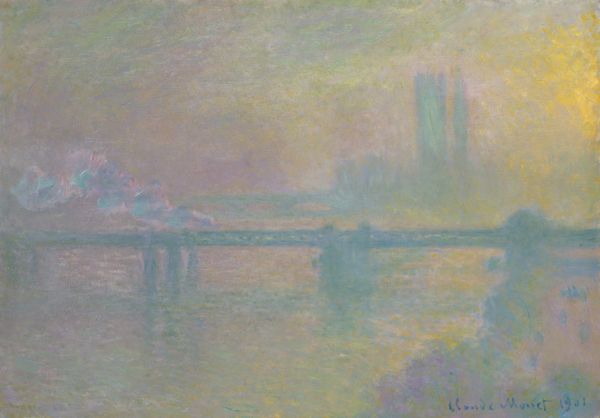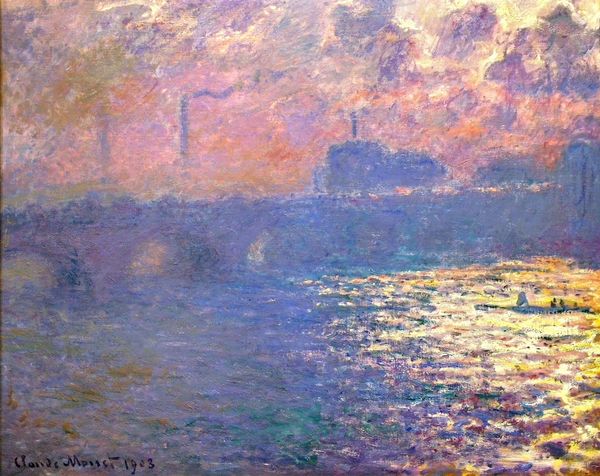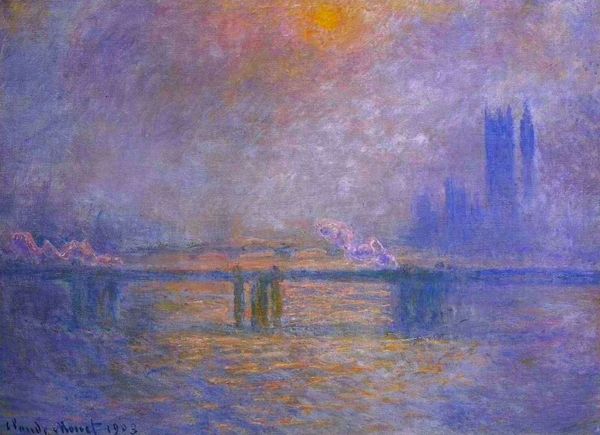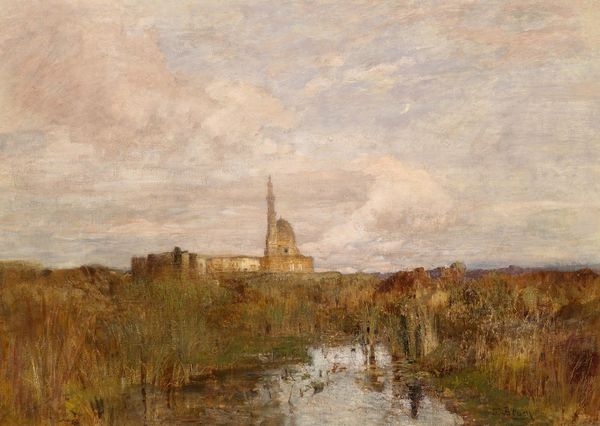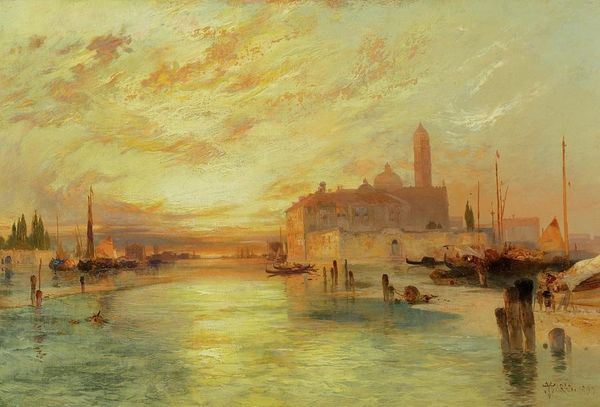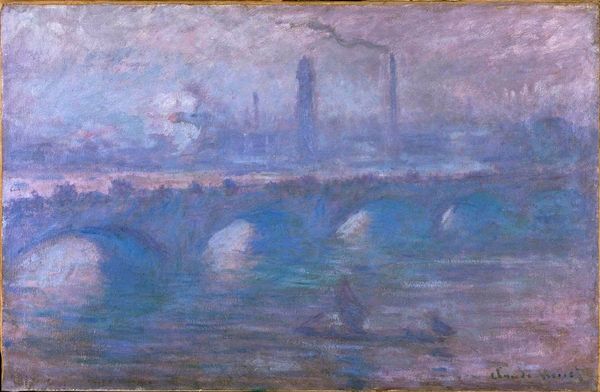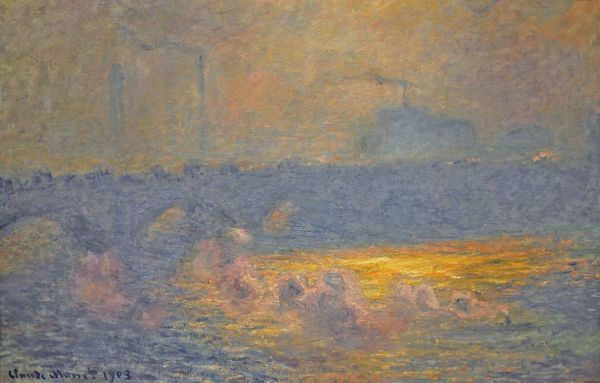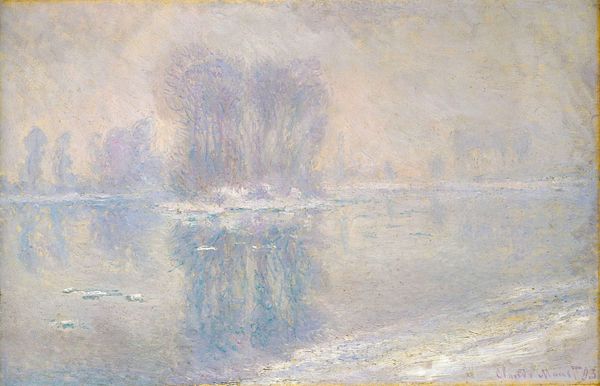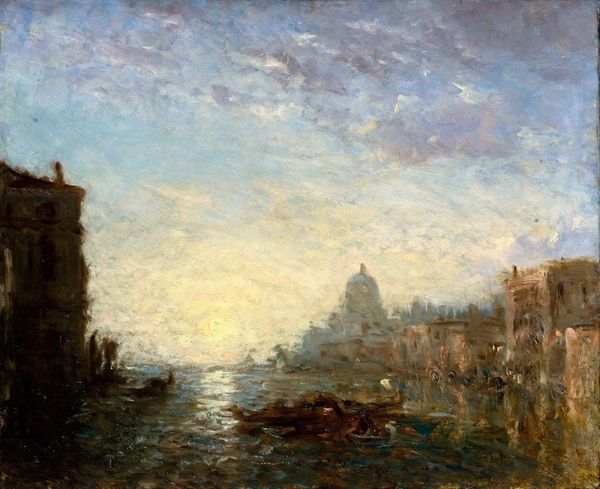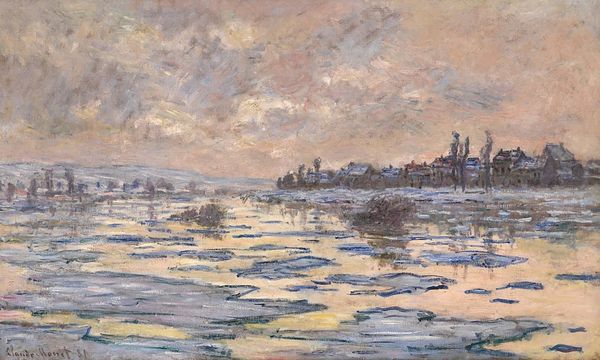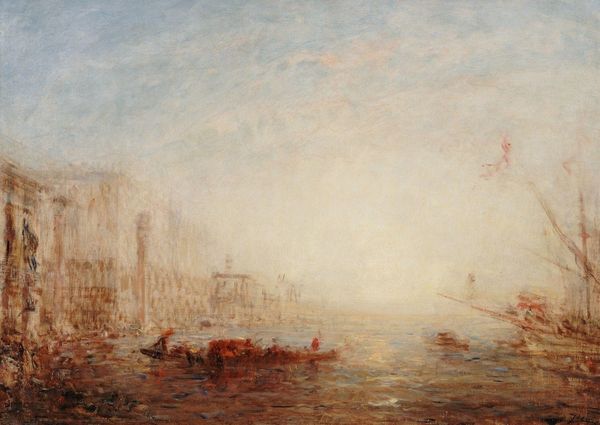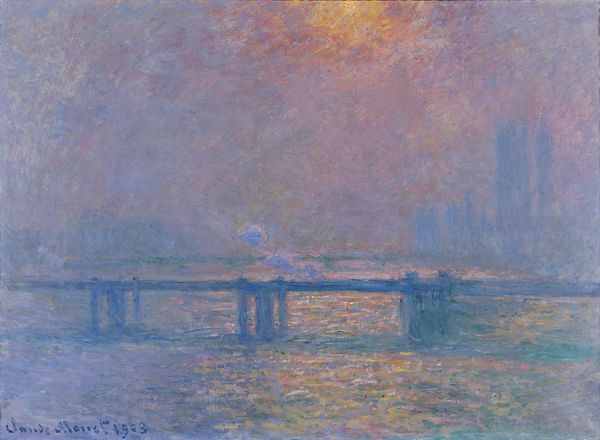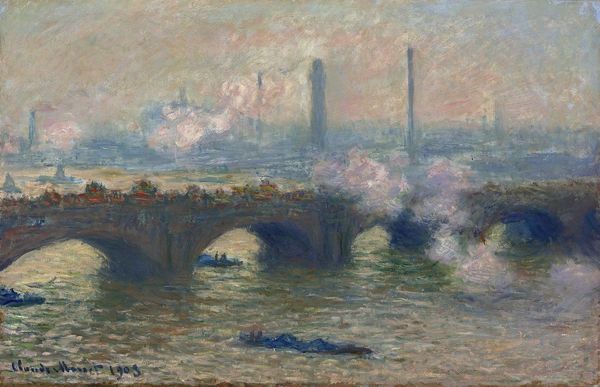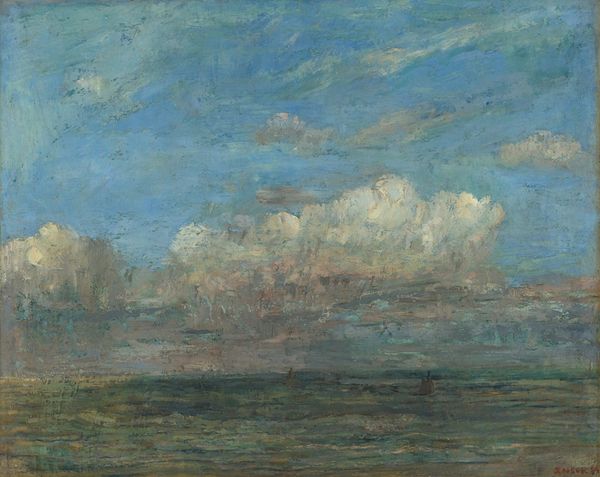
Dimensions: 51 x 39 1/2 in. (129.54 x 100.33 cm) (canvas)58 7/8 x 47 3/8 in. (149.54 x 120.33 cm) (outer frame)
Copyright: No Copyright - United States
Curator: This painting, dating from 1913, is Edwin M. Dawes's "Channel to the Mills," currently held in the collection of the Minneapolis Institute of Art. He renders this cityscape scene in oil paint on canvas. Editor: Oh, wow, a faded dream of a factory town. It's like someone tried to paint the air itself—hazy, soft, a bit melancholy even. Curator: Absolutely. The subdued color palette and impressionistic style serve to romanticize industrial scenes which typically garner strong criticism for promoting unsafe work conditions and poor city planning in the pre-war era. Editor: You know, the brushstrokes are so loose and feathery. The rigid silhouettes of the buildings in the background practically dissolving into the atmosphere make them look like the remnants of an older castle or ancient fort instead of a modern factory. What do you suppose draws a painter to this subject? Curator: Artists have long been drawn to cityscapes because they reveal critical social structures. Paintings of industry have, throughout history, either served as symbols of progress and technological advancement, or sites of class division and environmental destruction. Dawes’ choice to obscure the realities of factory work reflects the complicated socio-political sentiments surrounding the second industrial revolution. Editor: Hmm, I see what you mean, it definitely hints at that push-pull dynamic. Is that fog, or is it smoke billowing around? Either way, it's got this almost haunting quality to it. I get the feeling of an immense transition— the rural world transforming before one’s eyes. But with that progress also comes great anxiety. The mills rise as powerful, modern entities on the horizon. But the world in front seems frozen. Curator: It is certainly evocative of a specific moment, both in the history of art and that of industrial expansion within United States culture. What strikes me is the picture’s overall ambiguity which prompts many readings of the relationship between industrial architecture, society, and the individual. Editor: It makes me want to time-travel, to breathe that air and understand exactly what Dawes was trying to say here. What stories the landscape has! Curator: Indeed, a painting can only hold so many narratives, and leave the rest open for interpretation.
Comments
No comments
Be the first to comment and join the conversation on the ultimate creative platform.
